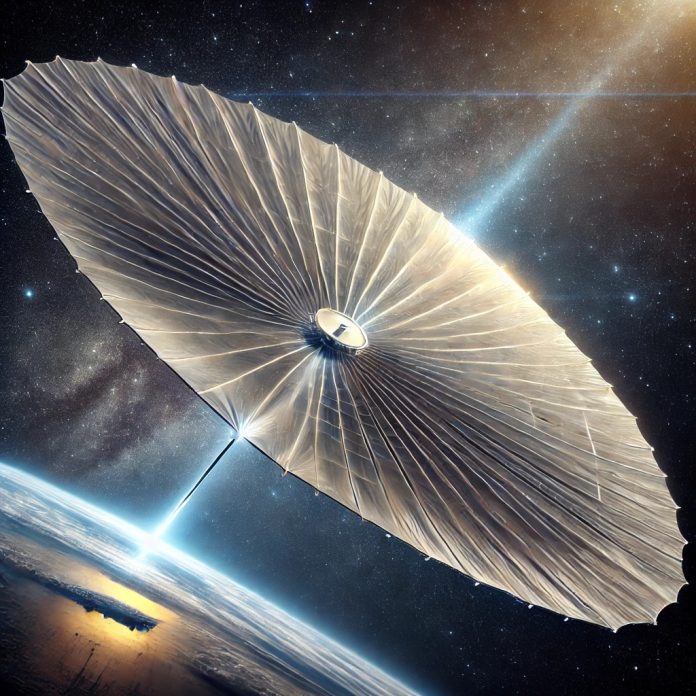
The Breakthrough Starshot program aims to cross the immense distances to the nearest star in just decades.
Using a high-powered laser to propel a reflective sail technology to relativistic speeds is their mission.
The selection of sail material is key to its success as it must be lightweight while being able to withstand acceleration and radiation from the laser.
A recent study explores various materials and proposes that core-shell structures—spherical particles composed of two different materials—could be a promising solution.
Breakthrough Starshot is an ambitious project to explore interstellar space by sending tiny, lightweight spacecraft to the nearest star system, Alpha Centauri.
The project plans to use ground-based, high-powered lasers to accelerate reflective ‘light sails,’ enabling the spacecraft to achieve relativistic speeds and travel the 4.37 light-years in just a few years.
Each spacecraft will be equipped with tiny sensors and communication systems, will collect data on exoplanets and other interstellar phenomena along the way.
If successful, it could mark our first step toward exploring distant star systems and searching for extraterrestrial life.
Traveling at relativistic speeds, which are velocities close to the speed of light, presents amazing possibilities but brings with it immense difficulties.
At these speeds, time dilation (a phenomenon predicted by Einstein’s theory of relativity) causes time to pass more slowly for the traveler relative to observers on Earth, potentially allowing journeys to distant stars within a single human lifetime from the traveler’s perspective.
This won’t be a problem for Starshot however as they plan to send tiny spacecraft only. However, achieving such speeds, even for Starshot requires overcoming immense energy demands, as the kinetic energy needed increases exponentially with velocity.
The environment at relativistic speeds also becomes particularly hazardous. Collisions with particles at such high speeds could easily destroy spacecraft, and radiation exposure would intensify due to relativistic effects.
To complete the journey in a few decades the spacecraft needs to be accelerated to an estimated 20% of the speed of light bringing with it all the problems outlined above. The selection of the right material for the sails is key.
In a paper recently published by Mitchell R. Whittam, Lukas Rebholz, Benedikt Zerulla and Carsten Rockstuhl from the Karlsruhe Institute of Technology in Germany the team report on the results of their search for the best material.
In particular they focus attention on the so called core-shell spheres.
The structures are based upon a matrix design which finds its origins in Mie Theory. This mathematical framework was developed by German physicist Gustav Mie in 1908 to describe how spherical particles scatter electromagnetic waves such as light.
In their study, they explore the reflective properties and acceleration times of spheres made from aluminium, silicon, silicon dioxide and various combinations.
The results were promising with a shell composed of a silicon and silicon dioxide combination yielding the best results. The work offers a significant insight into the structure of materials for light sails.
Whilst not a definitive outcome, they showed that core-shell spheres, which were a previously unexplored area of light sail physics is a promising avenue to explore for future experimental work.
Written by Mark Thompson/Universe Today.



